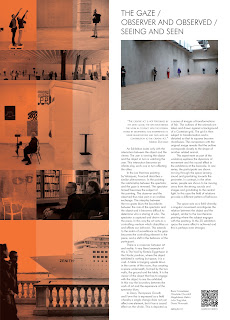Dear
Andrej,
I
hope everything went well in your remaining days in Venice. I had a lot of fun
for my part, and enjoyed the presentations. I am now writing a short piece on
the workshop and had a some questions.
1.
What is speculative pragmatism, and how does your workshop invigorate it?
2.
What do you mean with cartography being able to explore extrinsic
capacities?
3.
What did you hope to achieve with the workshop, and do you you feel it has been
achieved?
I
hope to speak to you soon at the faculty anyway!
Ivan
Dear
Ivan, Thank you for this opportunity. Please find my first response below:
1. Speculative pragmatism is a near synonym
to radical empiricism. It works on the premise that there is more to experience
than can be communicated, that the intelligible is an occlusion of the sensible
and not the other way around. Our take on the overarching (and overcoding) theme
of the Biennale is to propose that the common ground, if any, is sensibility.
Hence, “sensibility is ground zero”. However, if classical (naïve) empiricism
is limited to the actual, as the realm of metric properties, then the superior
or radical empiricism is transcendental, yet not transcendent, in its going
beyond the given. It also points to the inseparability of action and perception,
hence pragmatism.
The workshop was meant to exploit the
porosity of the boundary between the actual and the virtual, where the virtual
is as real, even if it is incorporeal. The distinction allows us to mark the
excess of potentiality hidden within any assemblage over any of its actualised
features or local manifestations. The rule of thumb was “ask not what is inside
your head, rather what your head is inside of.” In this sense we try to
overcome the fallacy of misplaced concreteness or the error of mistaking the
abstract for the concrete. As far as we are concerned, Chipperfield ’s conception
of the “common ground” may or may not work only
in retrospect. Not that it is too abstract, rather that it may not be
abstract enough.
2. By contrast to the practice of tracing
merely “what happens”, cartography or mapping is attuned to the higher order of
invariance, namely, “what is going on in what happens.“ It is a theory of
singularity and as such demands experiencing/experimenting scrutiny best
exemplified in the Spinozian line “we do not know what a body can do.” Our not
knowing is not down to a lack of sophistication, technical or otherwise. To
presume that we will eventually have a
priori knowledge is to commit a category error. Such dogmatism has returned
with a vengeance in the parametricist wet dream of conflating the virtual with
the actual.
For us, there is no representation, only
action – theoretical and practical. Cognition is always embodied, embedded,
extended, enacted and affective, that is, non-generic.
3. What the workshop tried to vehemently
oppose are common reductionist tendencies and fatalist overtones exhibited in
the contemporary architectural discourse. The ten radically different
presentations demonstrated – to our delight – that the stable regularities we
see in actuality do not have specific causes that can be demarcated and
isolated. Rather, they can only be understood as a dynamic cascade of many processes operating over time. In their cartography the students
successfully navigated between the Scylla of totalisation and Charybdis of essentialism.
What we really hope to have achieved belongs
to the ethico-political register and can be boiled down to the following lesson:
“Everything is contingently obligatory and not logically necessary.” It is this
non-anthropocentric and thus posthuman attitude that makes the current
affective turn timely and the logic of transdisciplinarity indispensable. In
order to unlock the emancipatory potential one needs to circumvent the messianic
promises of utopias and discursive claims to rights. The designer simply starts
by understanding that it could have been otherwise. This is what makes them a
designer in the first place, and we mean it in the most literal sense. It is
not a matter of plan (to be executed) but rather of the plane (of immanence).
The metadesign (design of design) that we are trying to propagate is thus
problem-oriented and not solution-fixated.
The undeniable success of the workshop is
unfortunately overshadowed by the faculty’s decision to discontinue the
services of our media guru Marc Boumeester. Virtue indeed seems to be its own
punishment.
Andrej, with best wishes



















No comments:
Post a Comment